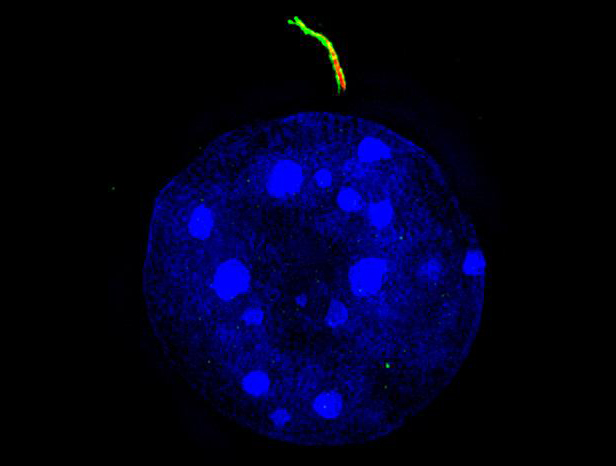현재 위치:홈 > 뉴스현황 > Press Events > Tiny Cellular Antenn...
저자: 업로드:2017-07-18 조회수:
Like it or not, as we age, our muscle cells are slowly exchanged, one by one, for fat cells. This process quickens when we injure a muscle, and an extreme form of this process is also seen in muscle-wasting diseases such as Duchenne muscular dystrophy (DMD). Now, scientists at UC San Francisco have shown that cellular antennae called cilia, found on fat-forming cells interspersed in muscle, play a key role in this muscle-to-fat transformation.
The findings, revealed in experiments with mice, appeared July 13 in the journal Cell, in an article entitled “Ciliary Hedgehog Signaling Restricts Injury-Induced Adipogenesis.” This article points to a previously unsuspected connection between cilia and tissue renewal.
Previous work has shown that when muscle is injured, fat-forming cells that live alongside muscle cells, called fibro/adipogenic progenitors (FAPs), divide and differentiate into fat cells. The new work indicates that, unlike muscle cells, these fat-forming FAPs are more likely to carry primary cilia, and that muscle injury further increased the abundance of FAPs with cilia. These observations suggested that cilia might be playing an important role in fat formation.

To test this hypothesis, the UCSF research team used two mouse models of muscle injury—an acute injury model created by injecting damaging agents into mouse muscles and a chronic injury model with progressive loss of muscle fibers such as that seen in in DMD.
“Genetically removing cilia from FAPs inhibited intramuscular adipogenesis, both after injury and in a mouse model of Duchenne muscular dystrophy,” wrote the authors of the Cell article. “Blocking FAP ciliation also enhanced myofiber regeneration after injury and reduced myofiber size decline in the muscular dystrophy model.”
Essentially, when the scientists genetically blocked the ability of FAPs to form cilia, both injury models showed lower amounts of fat in muscle. What's more, the loss of cilia not only led to the loss of fat, but also aided muscle regeneration.
"That was unexpected," said Daniel Kopinke, Ph.D., the first author of the new study. "We converted muscle in a mouse model of DMD into muscle that was more like that of a normal mouse."